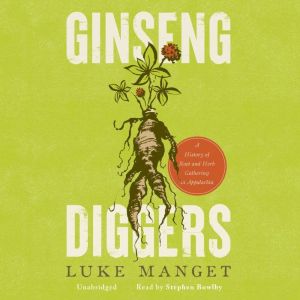
List: $19.95
| Sale: $13.97
Club: $9.97
Ginseng Diggers
A History of Root and Herb Gathering in Appalachia
Author: Luke Manget
Narrator: Stephen Bowlby
Unabridged: 9 hr 24 min
Format: Digital Audiobook Download
Publisher: Blackstone Audiobooks
Published: 04/26/2022
Category: Social Science - Agriculture & Food
Synopsis
The harvesting of wild American ginseng (panax quinquefolium), the gnarled, aromatic herb known for its therapeutic and healing properties, is deeply established in North America and has played an especially vital role in the southern and central Appalachian Mountains. Traded through a trans-Pacific network that connected the region to East Asian markets, ginseng was but one of several medicinal Appalachian plants that entered international webs of exchange. As the production of patent medicines and botanical pharmaceutical products escalated in the mid-to-late-nineteenth century, southern Appalachia emerged as the United States’s most prolific supplier of many species of medicinal plants. The region achieved this distinction because of its biodiversity and the persistence of certain common rights that guaranteed widespread access to the forested mountainsides, regardless of who owned the land. Following the Civil War, root digging and herb gathering became one of the most important ways landless families and small farmers earned income from the forest commons. This boom influenced class relations, gender roles, forest use, and outside perceptions of Appalachia, and began a widespread renegotiation of common rights that eventually curtailed access to ginseng and other plants. Based on extensive research into the business records of mountain entrepreneurs, country stores, and pharmaceutical companies, Ginseng Diggers: A History of Root and Herb Gathering in Appalachia is the first book to unearth the unique relationship between the Appalachian region and the global trade in medicinal plants. Historian Luke Manget expands our understanding of the gathering commons by exploring how and why Appalachia became the nation’s premier purveyor of botanical drugs in the late-nineteenth century and how the trade influenced the way residents of the region interacted with each other and the forests around them.